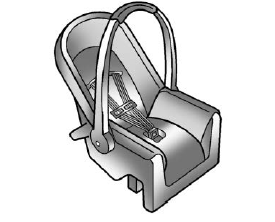Chevrolet Silverado: Vehicle Checks / Front & Rear Axle
Front Axle
When to Check Lubricant
It is not necessary to regularly check the front axle fluid unless a leak is suspected or an unusual noise is heard. A fluid loss could indicate a problem. Have it inspected and repaired. This service can be complex. See your dealer.
Do not directly power wash the transfer case and/or front/rear axle output seals. High pressure water can overcome the seals and contaminate the fluid. Contaminated fluid will decrease the life of the transfer case and/or drive axles and should be replaced.
Rear Axle
When to Check Lubricant
It is not necessary to regularly check the rear axle fluid unless a leak is suspected or an unusual noise is heard. A fluid loss could indicate a problem. Have it inspected and repaired. This service can be complex. See your dealer.
Do not directly power wash the transfer case and/or front/rear axle output seals. High pressure water can overcome the seals and contaminate the fluid. Contaminated fluid will decrease the life of the transfer case and/or drive axles and should be replaced.
 Four-Wheel Drive
Four-Wheel Drive
Transfer Case
When to Check Lubricant
Refer to Maintenance Schedule to determine when to check the lubricant.
Fill Plug
Drain Plug
To get an accurate reading, the vehicle should be on a level surface...
 Noise Control System
Noise Control System
NOISE EMISSIONS WARRANTY
General Motors LLC, warrants to the first person who purchases this vehicle for
purposes other than resale and to each subsequent purchaser that this vehicle as
manufactured by General Motors LLC, was designed, built and equipped to conform
at the time it left General Motors LLC’s control with all applicable U...
Other information:
Chevrolet Silverado 2019-2026 Owners Manual: Adding Equipment to the Airbag-Equipped Vehicle
Adding accessories that change the vehicle's frame, bumper system, height, front end, or side sheet metal, may keep the airbag system from working properly. The operation of the airbag system can also be affected by changing, including improperly repairing or replacing, any parts of the following: Airbag system, including airbag modules, front or side impact sensors, sensing and diagnostic module, or airbag wiring Front seats, including stitching, seams, or zippers Seat belts Steering wheel, instrument panel, overhead console, ceiling trim, or pillar garnish trim Inner door seals, including speakers Your dealer and the service manual have information about the location of the airbag modules and sensors, sensing and diagnostic module, and airbag wiring along with the proper replacement procedures...
Chevrolet Silverado 2019-2026 Owners Manual: Seat Belts
This section describes how to use seat belts properly, and some things not to do. Warning Do not let anyone ride where a seat belt cannot be worn properly. In a crash, if you or your passenger(s) are not wearing seat belts, injuries can be much worse than if you are wearing seat belts...
Categories
- Manuals Home
- 4th Generation Silverado Owners Manual
- 4th Generation Silverado Service Manual
- Electric Parking Brake
- Folding Mirrors
- Power Outlets
- New on site
- Most important about car
Child Restraint Systems

Rear-Facing Infant Restraint
A rear-facing child restraint provides restraint with the seating surface against the back of the infant.
